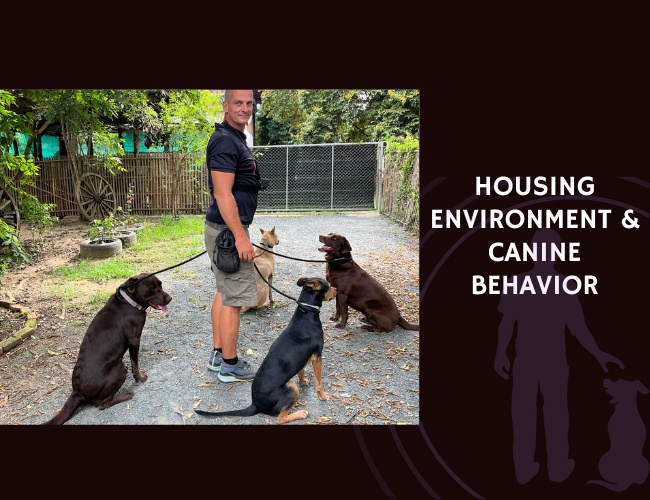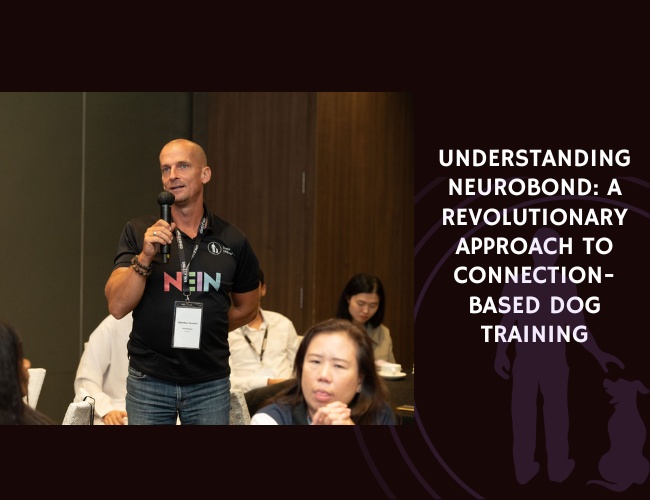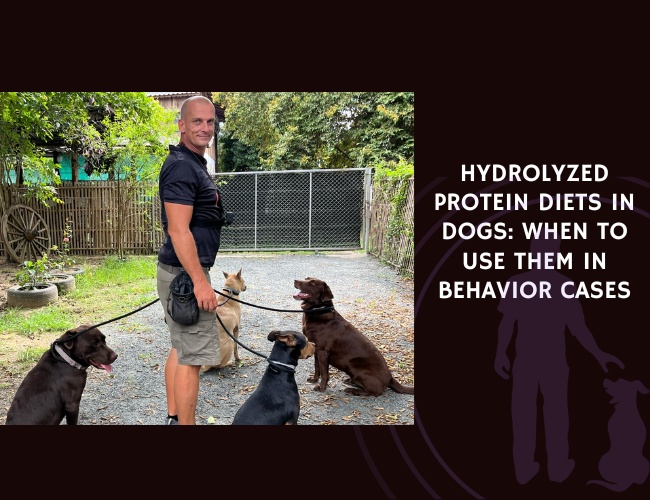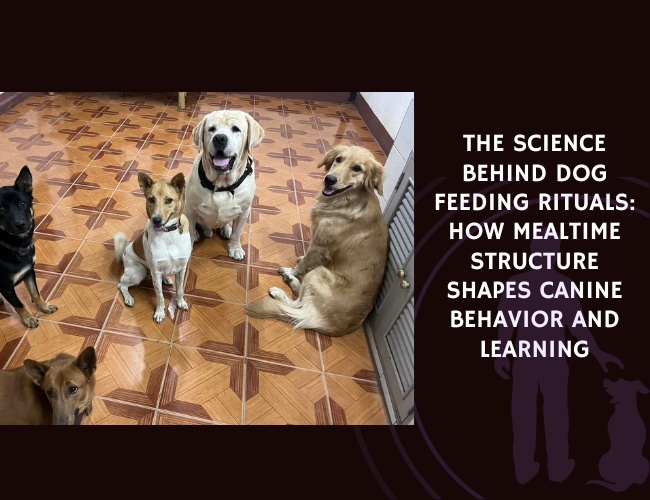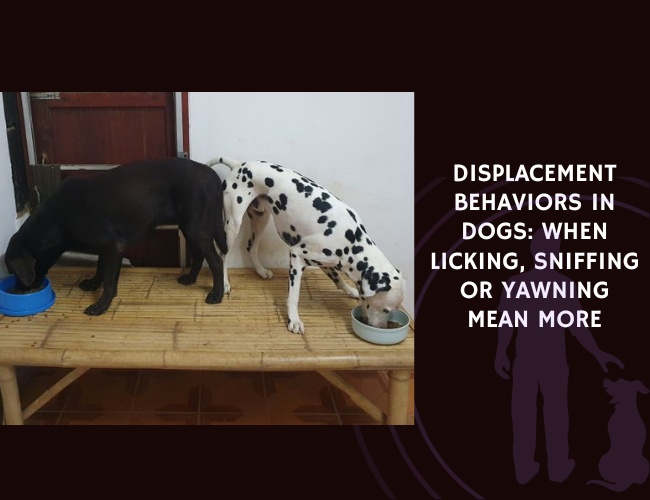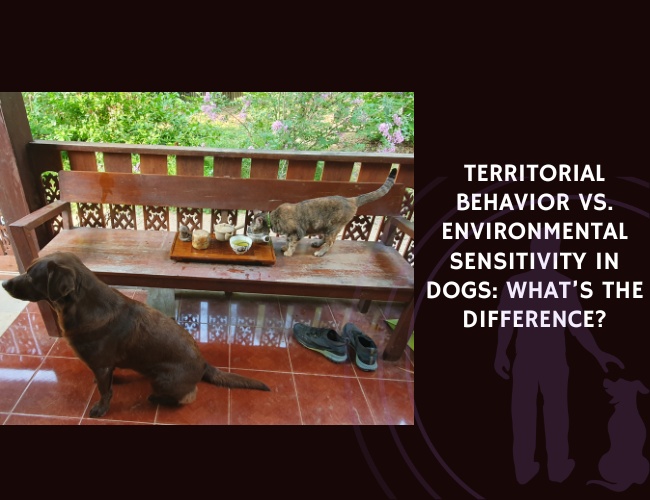Understanding the Impact of Housing Environment
The Crucial Role of Early Environment in Shaping Dog Behavior
The environment in which a dog spends its early years plays an essential role in shaping its behavior. Just like humans, dogs undergo critical periods of development where their surroundings significantly impact their future adult behavior. Puppies exposed to a stimulating environment filled with various sensory and social experiences are more likely to develop into well-adjusted and confident adult dogs. This crucial phase molds their responses to new situations, people, and other animals, thus highlighting the importance of providing a nurturing early environment.
For instance, exposure to a variety of stimuli, such as different sounds, textures, and social interactions, can help mitigate future fears and anxieties. Conversely, a lack of early environmental enrichment can result in shyness, aggression, or other problematic behaviors. Ensuring your puppy has diverse experiences early on can contribute to a happy, mentally secure adult dog.
How Isolation Affects Social Skill Development
Isolation can profoundly affect a dog’s ability to develop necessary social skills. Dogs are inherently social animals that thrive on interactions with both humans and other dogs. When a dog experiences prolonged periods of isolation, it can lead to severe behavioral issues, such as excessive barking, aggression, or fearfulness.
Without regular social interaction, dogs can struggle to learn essential communication cues. Play and engagement with other dogs teach puppies about bite inhibition, body language, and the subtleties of canine communication. Dogs secluded from these interactions may exhibit difficulty in understanding and responding to these cues appropriately when eventually exposed to other dogs or social scenarios.
The Relationship Between Living Space and Behavioral Patterns
The size and layout of a living space can significantly influence a dog’s behavioral patterns. Dogs require sufficient space to move around, play, and explore, which are critical activities for their mental and physical health. A cramped, cluttered, or monotonous living environment can lead to stress, anxiety, and the development of destructive behaviors such as chewing or excessive digging.
Providing a stimulating environment that includes both indoor and outdoor spaces is crucial. Access to outdoor areas allows dogs to engage in natural behaviors such as sniffing, running, and exploring, which are highly beneficial for their well-being. Conversely, a spacious and well-organized indoor environment can provide comfort and a safe havens where dogs can retreat and relax.
On the other hand, living environments that are either too hectic or too restrictive can contribute to hyperactivity or lethargy in dogs. Finding a balance between providing ample space and ensuring that the environment is enriched with toys, activities, and social interaction opportunities is key to promoting healthy behavioral patterns.
Understanding these factors will help in recognizing the importance of a suitable housing environment in promoting positive behaviors and overall well-being in dogs. By considering the impact of early experiences, the perils of isolation, and the relationship between space and behavior, dog owners can work towards creating more supportive and enriching environments for their canine companions.
Social Learning in Different Housing Settings
How Dogs Learn from Other Dogs in Shared Environments
Dogs are inherently social creatures, and their behavior is significantly molded by their interactions with other dogs. In shared environments such as multi-dog households or communal living situations, dogs can learn a great deal through social learning—a process by which they observe and imitate the behavior of others.
For example, younger or less experienced dogs often pick up vital skills and behaviors by watching their more seasoned counterparts. This can range from learning basic commands and social norms to more complex behaviors such as problem-solving and play styles. The presence of more confident dogs can also provide a calming influence, reducing anxiety in more timid dogs and encouraging them to engage more freely with their surroundings.
Shared environments can present challenges as well. In settings where competition for resources like food, toys, and attention is high, less dominant dogs may exhibit stress or submissive behaviors. Therefore, managing interactions and ensuring that all dogs have equitable access to resources is crucial in promoting healthy social learning.
The Importance of Human Interaction in Social Development
While interaction with other dogs is beneficial, human interaction plays an equally crucial role in a dog’s social development. Dogs thrive on human companionship and the bond they form with their owners can significantly influence their overall behavior and well-being.
Humans serve as leaders, provide structure, and teach dogs how to behave within the household and in society. Regular interaction, including training sessions, playtime, and affection, helps dogs learn to trust and follow human cues. Additionally, positive reinforcement from humans can strengthen desired behaviors and discourage undesirable ones, facilitating better behavioral outcomes.
Neglecting human interaction can lead to a variety of behavioral issues in dogs, including separation anxiety, destructive behaviors, and even aggression. Thus, consistent and positive human engagement is essential in fostering a well-adjusted and sociable dog.
Differences Between Single-Dog and Multi-Dog Households
There are notable differences between single-dog and multi-dog households that can affect a dog’s behavior. In single-dog households, the dog typically receives undivided attention and resources from their human companions. This can lead to strong human-dog bonds but may also result in the dog becoming highly dependent on their human for social interaction and stimulation.
Conversely, in multi-dog households, dogs often form their own social structures and hierarchies. While this can provide rich social interaction and help develop social skills, it can also introduce dynamics that need careful management. Resource guarding, competition, and conflicts over territory can arise, requiring owners to be diligent in monitoring interactions and ensuring harmony.
Each type of household has its unique advantages and challenges, and understanding these differences is key to providing the best possible environment for dogs to thrive. Regular observation and adaptation to each dog’s needs, whether in a single or multi-dog household, play a crucial role in promoting healthy social behaviors and overall well-being.
Moving forward, fostering a healthy and enriching environment is vital for the well-being of dogs in different living situations. The focus will now shift towards recognizing signs of environmental stress and understanding the importance of a supportive living space for your dog’s physical and emotional health.
Signs of Environmental Stress
Common Behavioral Indicators of Unsuitable Housing Conditions
Understanding the signs of environmental stress in dogs is essential for their well-being. Dogs, like humans, are sensitive to their living conditions and will exhibit certain behaviors when their environment is not ideal. Common behavioral indicators of environmental stress include:
- Excessive Barking: A dog that barks excessively may be trying to convey discomfort or anxiety about their surroundings.
- Destructive Chewing: Destructive behavior, such as chewing on furniture or other household items, can be a sign of boredom or stress.
- Withdrawal: A dog that isolates themselves or becomes less interactive than usual may be experiencing environmental stress.
- Aggression: Uncharacteristic aggressive behavior towards humans or other animals can be a reaction to stress.
- Hyperactivity: Excessive energy or inability to settle down often indicates an over-stimulating or under-stimulating environment.
- House-soiling: Accidents inside the house, especially in dogs that are already house-trained, may indicate discomfort or anxiety.
Recognizing these signs early can help you take the necessary steps to improve your dog’s living conditions.
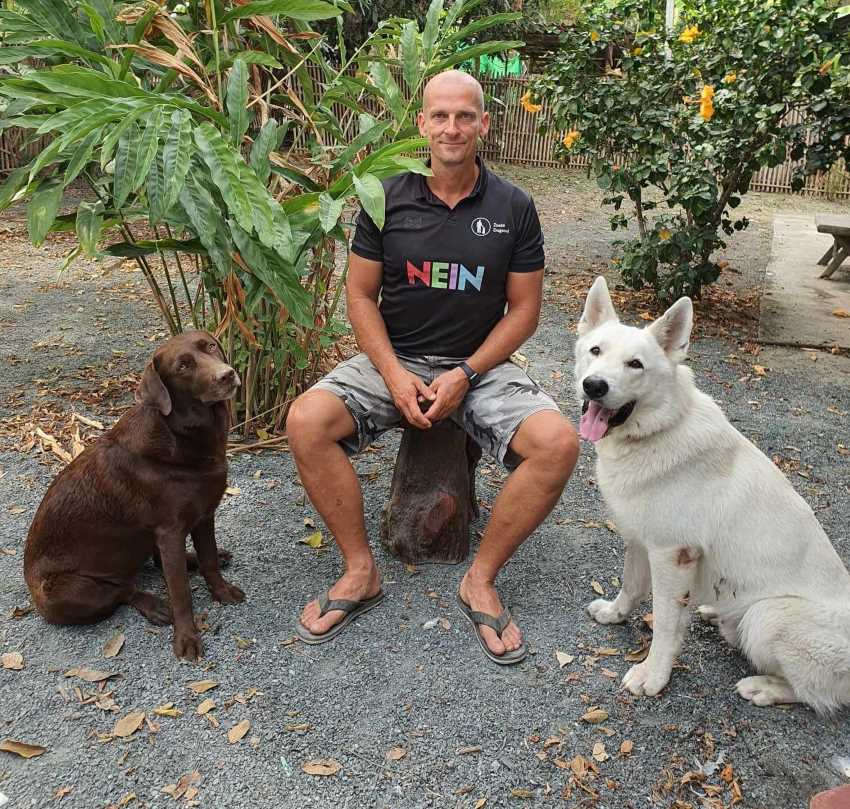
How to Recognize When Your Dog’s Environment is Affecting Their Well-being
Learning to interpret these behavioral signals is crucial. For instance, if you notice your previously well-behaved dog starting to bark excessively, it may not just be a phase but a signal that something in their environment is amiss. Here are a few steps to recognize environmental stress:
- Observe Changes in Behavior: Take note of any sudden changes in your dog’s usual behavior. Are they more withdrawn or acting out in uncharacteristic ways?
- Assess Their Living Space: Evaluate their living space for factors that might be contributing to stress. Is the area too confined? Are there enough resources like food, water, and toys?
- Monitor Their Social Interactions: Provide plenty of opportunities for positive social interactions, both with humans and other dogs. Lack of social engagement can lead to anxiety and stress.
- Seek Professional Advice: If you are unsure whether your dog’s environment is causing stress, consider seeking advice from a veterinarian or a professional dog behaviorist.
The Link Between Housing Stress and Communication Problems
The connection between a dog’s living environment and their ability to communicate effectively is significant. Stressful housing conditions can lead to communication problems, which further exacerbate behavioral issues. Here’s how stress impacts communication:
- Misreading Cues: A stressed dog may misinterpret social cues from humans and other dogs, leading to confusion and potential conflicts.
- Expressing Needs: Dogs under stress may struggle to express their needs properly, whether it’s signaling the need to go outside or seeking affection.
- Receptivity: Stressed dogs are less receptive to training and commands, making behavior management more difficult.
Creating a stable, enriching environment is essential to ameliorate these communication issues. Dogs are better able to understand and respond to their families when they feel secure and content in their environment.
By becoming attuned to these behavioral indicators and understanding their origins, you can take the necessary measures to enhance your dog’s living conditions, thus improving their overall well-being. Addressing these issues is a proactive step toward fostering a healthy, balanced relationship with your pet.
Next, we will explore how to create an enriching home environment that caters to a dog’s needs.
Creating an Enriching Home Environment
An enriching home environment plays a crucial role in promoting a dog’s physical, mental, and emotional well-being. The right living conditions can significantly reduce the likelihood of behavioral issues and enhance a dog’s overall quality of life. This chapter provides insights into essential elements of a dog-friendly living space, the importance of balancing indoor and outdoor access, and ways to incorporate social interaction opportunities.
Essential Elements of a Dog-Friendly Living Space
Dogs thrive in environments that cater to their natural instincts and behaviors. Here are some essential elements to consider when creating a dog-friendly living space:
- Comfortable Resting Areas: Ensure your dog has access to comfortable, safe, and quiet places to rest and sleep. Beds or crates should be appropriately sized for your dog and positioned in low-traffic areas to provide a sense of security.
- Stimulating Toys and Activities: Provide a variety of toys to keep your dog mentally stimulated. Puzzle toys, chew toys, and interactive games can prevent boredom and destructive behavior.
- Designated Exercise Area: If possible, set up a designated area where your dog can play and exercise. This could be an indoor space with room to move around or a secured outdoor area.
- Safe Environment: Remove or secure any hazardous items that could harm your dog. This includes electrical cords, toxic plants, and small objects that could be swallowed.
Balancing Indoor and Outdoor Access
Access to both indoor and outdoor environments can greatly enrich a dog’s daily life. Striking the right balance ensures your dog enjoys the benefits of both spaces:
- Outdoor Exploration: Allow your dog regular access to a safe, enclosed outdoor space. Time spent outside provides opportunities for exploration, exercise, and exposure to different sights, sounds, and smells.
- Indoor Comfort: Ensure indoor spaces are inviting and comfortable, with ample opportunities for relaxation and bonding with family members. Indoor activities can include training sessions, interactive play, and quiet time.
- Routine and Structure: Consistent routines help dogs feel secure and understand what to expect. Establish regular times for outdoor activities, feeding, and rest to create a balanced daily schedule.
Incorporating Social Interaction Opportunities
Social interaction is vital for a dog’s mental health and well-being. Regular interaction with humans and other animals helps develop social skills and reduces stress:
- Positive Human-Dog Interactions: Spend quality time with your dog through activities such as training, play, and cuddling. These interactions build trust and strengthen the bond between you and your dog.
- Dog-People Socialization: Introduce your dog to different people in a controlled and positive manner. This helps them become more comfortable around strangers and reduces anxiety in new situations.
- Dog-Dog Socialization: Arrange playdates and socialization opportunities with other friendly dogs. Ensure these interactions are supervised and occur in a safe environment to foster positive experiences.
- Structured Social Activities: Consider enrolling your dog in group classes, doggy daycare, or regular visits to a dog park. These structured activities provide additional opportunities for socialization and enrichment.
Creating an enriching home environment involves a thoughtful balance of comfort, stimulation, exercise, and social interaction. By addressing these key areas, you can support your dog’s well-being and contribute to their overall happiness.
Recognizing the importance of an enriching environment sets the foundation for understanding how to manage multiple dogs in a household and fostering harmony among them.
Special Considerations for Multiple Dog Households
Owning multiple dogs can be a rewarding experience, but it also brings unique challenges. This chapter will explore strategies for managing space and resources in a multi-dog household, fostering positive interactions among the dogs, and preventing territory-related conflicts.
Managing Space and Resources
Effective space and resource management is crucial in ensuring a harmonious multi-dog household. Dogs thrive on stability and clear boundaries, which help minimize competition and conflict.
Designated Areas
Each dog should have distinct areas for eating, sleeping, and playing. Separate feeding stations help prevent food-related aggression and ensure that each dog eats at its own pace without feeling threatened. Designate unique sleeping spots for each dog to provide them with personal space and a sense of security.
Toys and Enrichment
Provide a variety of toys to reduce competition and encourage play. Interactive toys, puzzle feeders, and chews can keep dogs mentally stimulated. Rotate toys regularly to maintain their interest and prevent boredom.
Routine and Structure
Maintaining a consistent routine is essential. Establish regular feeding times, exercise schedules, and training sessions. Predictability helps dogs feel secure and reduces the chances of behavioral issues arising from uncertainty.
Fostering Positive Interactions
Dogs are social animals, but they need guidance to develop positive relationships with each other. Promote cooperative behaviors and minimize rivalry through thoughtful intervention.
Supervised Introductions
When introducing a new dog to the household, it’s important to do so gradually and in a controlled environment. Supervised interactions allow the dogs to become acquainted without feeling overwhelmed. Gradually increase their time together as they become more comfortable.
Rewarding Good Behavior
Positive reinforcement is key. Reward each dog for calm and friendly interactions. This can be as simple as giving treats, praise, or petting. Reinforcing good behavior encourages dogs to repeat these actions.
Equal Attention
Ensure that each dog receives fair attention and affection. Favoritism can lead to jealousy and competition, which disrupts household harmony. Spend individual quality time with each dog to strengthen your bond and meet their emotional needs.
Preventing Territory-Related Conflicts
Territoriality can be a significant source of tension. Dogs can become possessive of their space, which may lead to conflicts.
Clearly Defined Boundaries
Set clear boundaries, both inside and outside the home. Use baby gates or other barriers to create distinct areas and manage access. This helps dogs understand their own space and reduces territorial disputes.
Neutral Grounds

Encourage interactions in neutral areas, such as parks or open fields, where territorial claims are less likely. This can be particularly useful for initial introductions or when tensions rise.
Conflict Resolution
If conflicts do arise, address them promptly and calmly. Avoid punishing aggressive behavior, as this can exacerbate tensions. Instead, use redirection techniques to distract the dogs and diffuse the situation. Consult a professional trainer or behaviorist if territorial issues persist.
By effectively managing space and resources, fostering positive interactions, and preventing territory-related conflicts, dog owners can create a peaceful and enriching environment for multiple dogs. With thoughtful planning and consistent effort, a multi-dog household can be a harmonious and joyful home for all.
Practical Solutions for Common Housing Challenges
Adapting Small Living Spaces for Dogs
Housing a dog in a small living space requires creativity and consideration to ensure their mental and physical well-being. Here are some effective strategies to help you adapt:
- Maximize Vertical Space: While floor space may be limited, walls can be utilized for storage and enrichment. Install shelves or wall-mounted ramps for dogs that enjoy climbing or have appropriate agility.
- Create Defined Zones: Establish separate areas within your living space for different activities, such as playing, eating, and resting. This helps your dog understand where specific behaviors are appropriate and reduces confusion and stress.
- Compact Toys and Equipment: Invest in toys and gear designed for smaller spaces, like foldable crates, collapsible food and water bowls, and compact beds that can be easily stored when not in use.
- Regular Outdoor Exercise: Schedule daily walks and play sessions at nearby parks or open spaces. This not only provides physical exercise but also offers mental stimulation from new sights and smells.
- Interactive Play Indoors: Use puzzle toys, treat-dispensing balls, and interactive games to keep your dog engaged while indoors. These activities help to burn off excess energy and keep them mentally stimulated.
Addressing Isolation in Working Households
Many dog owners struggle with leaving their pets alone while they go to work. Prolonged isolation can lead to separation anxiety and behavioral issues. Mitigate these challenges with the following solutions:
- Hire a Dog Walker: Hiring a professional dog walker to take your dog out for exercise and socialization during the day can greatly reduce feelings of isolation and boredom.
- Dog Daycare Services: If feasible, enroll your dog in a daycare facility where they can interact with other dogs and humans. These facilities provide structured activities to keep your dog busy and entertained.
- Engage in Quality Time: Ensure to spend quality time with your dog before and after work. Engage them in play, cuddles, and training sessions to strengthen your bond and reassure them of your presence.
- Interactive Surveillance: Set up a pet camera that allows you to monitor and interact with your dog remotely. Some advanced models even dispense treats on command, providing positive reinforcement while you are away.
- Leave Comfort Items: Provide your dog with comforting items such as your worn clothing or a blanket that smells like you. Familiar scents can be soothing and reduce anxiety while you are gone.
Creating Environmental Enrichment on a Budget
Enhancing your dog’s living environment does not need to be expensive. Here are simple and cost-effective ways to enrich their environment:
- DIY Toys and Puzzles: Create toys using household items, like stuffing a cardboard tube with treats or hiding kibble in a folded towel. These DIY options can be just as stimulating as store-bought versions.
- Varied Walking Routes: Take different walking routes or visit various parks and trails to provide new experiences. Changing up the scenery keeps walks interesting and mentally stimulating for your dog.
- Social Interaction: Arrange playdates with other dog owners. Social interactions with other dogs are crucial for mental and social development and can be facilitated without cost.
- Training and Commands: Engage in regular training sessions, teaching new commands or tricks. This not only provides mental challenge but also strengthens your bond with your dog.
- Sensory Enrichment: Introduce new and diverse sensory experiences with items like bubble machines, different textures (rugs, mats), or scent trails using essential oils or dog-safe plants.
By adapting strategies to fit your unique living situation, you can ensure that your dog remains happy, healthy, and well-adjusted, regardless of the space or budget available.

